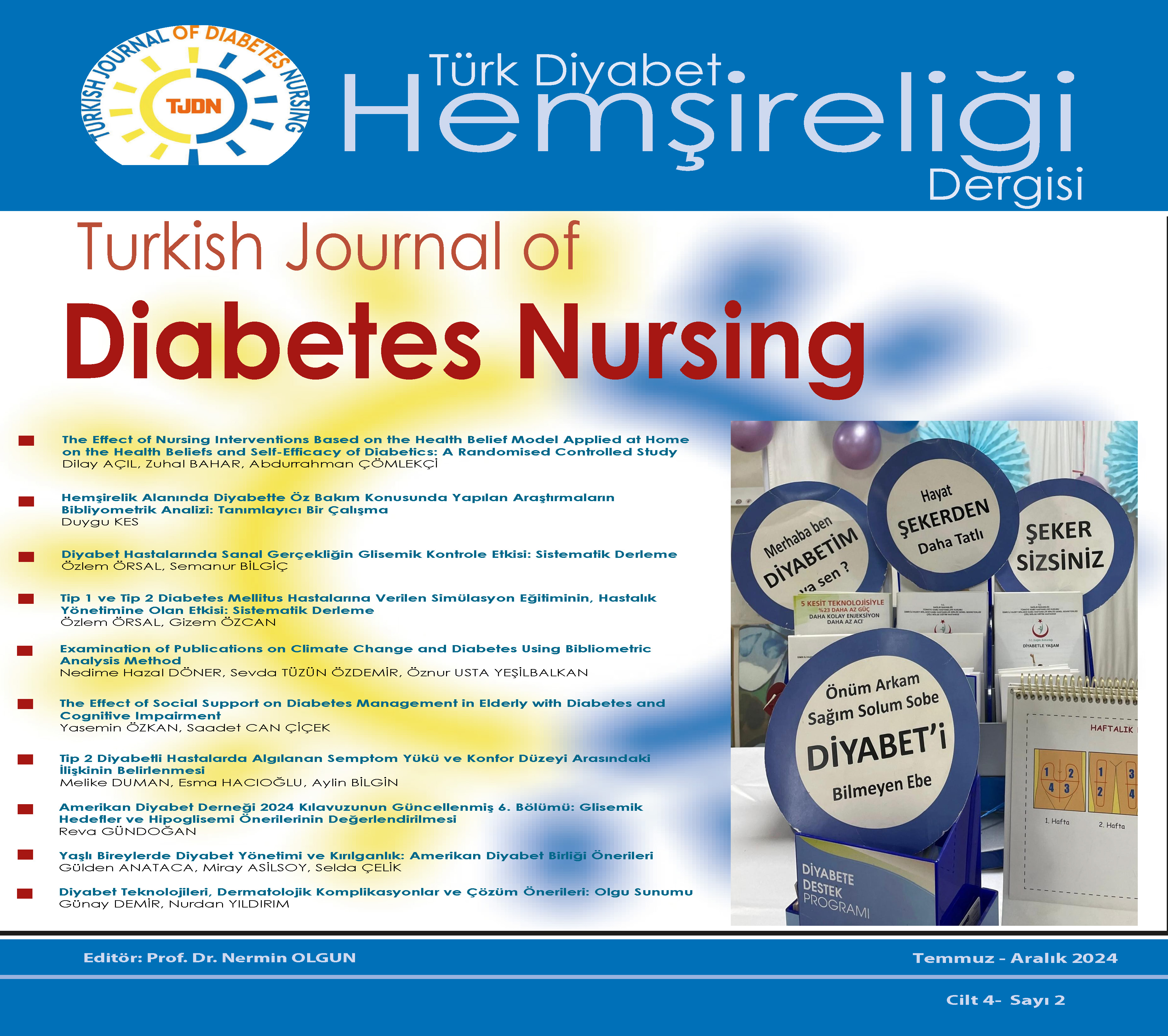Author :
Abstract
Amaç: Bu sistematik derleme diyabet hastalarında kullanılan sanal gerçeklik uygulamalarının glisemik kontrole etkisini incelemek amacıyla yapılmıştır.
Yöntem: PICOS kriterlerine uyan “Diyabet, Sanal gerçeklik, Kan glukozu, Glisemik Kontrol ve HbA1C’’ ve “Diabetes, Virtual reality, Blood glucose, Glycemic Control, and HbA1C’’ anahtar kelimeleriyle Web of Science, COCHRANE Library, PUBMED, SCOPUS, Science Direct, Dergipark ve Google Akademik veri tabanlarından 3 makale PRISMA-P kontrol listesi ile incelenmiştir.
Bulgular: Çalışmaların evrenini iki ülke, örneklemini hastanelerdeki Tip 1, Tip 2 ve gestasyonel diyabet tanılı 41-119 hasta oluşturmuştur. Müdahale ise 2 hafta-6 ay süreyle değişen VR gözlük ve ses rehberliğinde duygusal imgeleme dinletisi ve iki VR terapi egzersizi olmak üzere 3 farklı sanal gerçeklik uygulaması ile hemoglobin A1c, açlık glikozu gibi glisemik kontrol değişkenleri incelenmiştir.
Sonuç: Sanal gerçeklik uygulamaları diyabet hastalarının kan glukozunun, HbA1c ve serum fruktozamin değerlerinin azaltılmasında etkilidir. Deneysel çalışmaların arttırılması, sağlık kuruluşlarında taburculuk eğitimlerine sanal gerçeklik uygulamalarının entegre edilmesi önerilmektedir.
Keywords
Abstract
Objectives: This systematic review aims to examine the effect of virtual reality applications on glycemic control in diabetic patients.
Methods: Three articles meeting the PICOS criteria were reviewed using the PRISMA-P checklist. The articles were sourced from Web of Science, COCHRANE Library, PUBMED, SCOPUS, Science Direct, Dergipark, and Google Scholar databases with the keywords “Diabetes, Virtual reality, Blood glucose, Glycemic Control, and HbA1C” and “Diyabet, Sanal gerçeklik, Kan glukozu, Glisemik Kontrol ve HbA1C.’’
Results: The studies involved populations from two countries, with samples ranging from 41-119 patients with Type 1, Type 2, and gestational diabetes in hospitals. The interventions included three virtual reality applications: emotional imagery sessions guided by VR glasses and voice for 2 weeks to 6 months, and two VR therapy exercises. The variables for glycemic control examined were hemoglobin A1c, fasting glucose, and other related measures.
Conclusion: Virtual reality interventions effectively reduce blood glucose, HbA1c, and serum fructosamine levels in patients with diabetes. Increasing the number of experimental studies and integrating virtual reality applications into discharge education in healthcare institutions are recommended.





